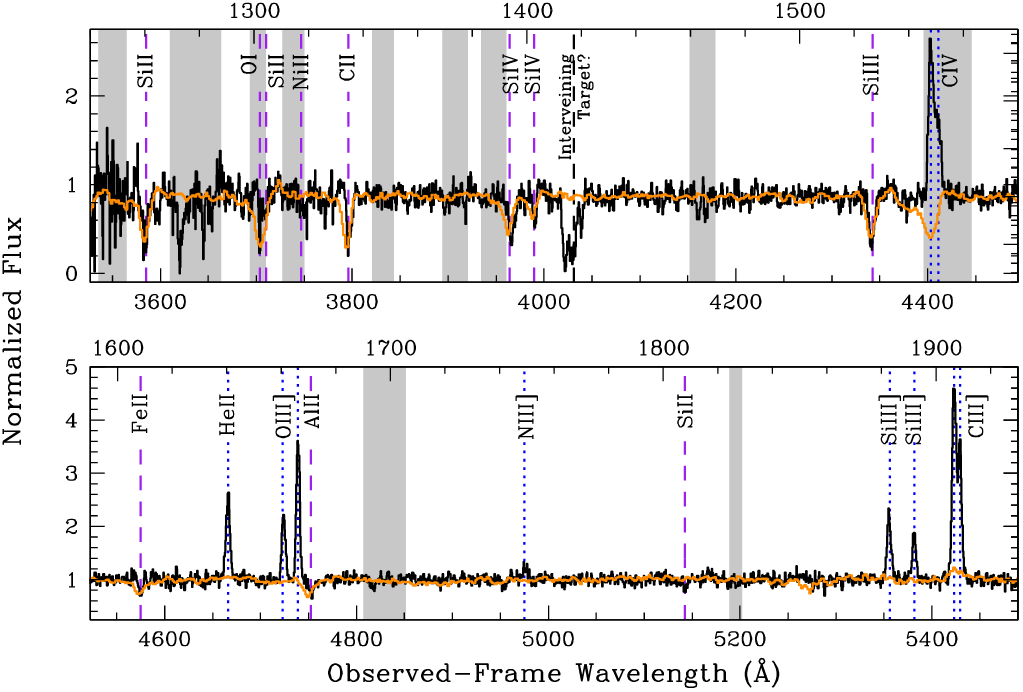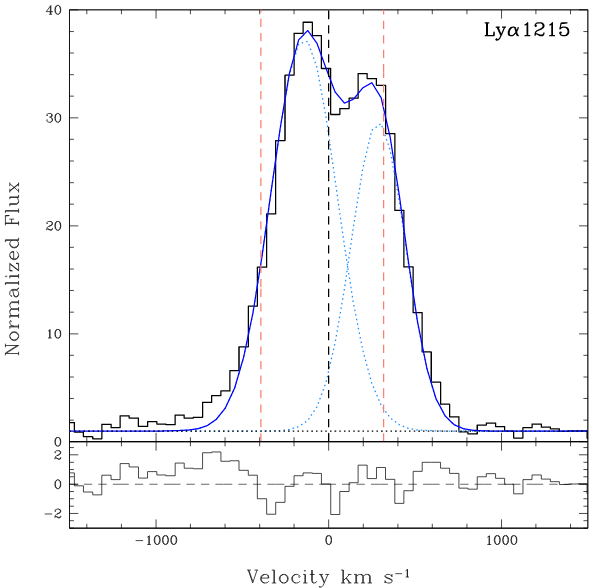Editor’s note: Astrobites is a graduate-student-run organization that digests astrophysical literature for undergraduate students. As part of the partnership between the AAS and astrobites, we occasionally repost astrobites content here at AAS Nova. We hope you enjoy this post from astrobites; the original can be viewed at astrobites.org!
Title: A Window on the Earliest Star Formation: Extreme Photoionization Conditions of a High-Ionization, Low-Metallicity Lensed Galaxy at z∼2∗
Author: Danielle A. Berg, Dawn K. Erb, Matthew W. Auger, Max Pettini, Gabriel B. Brammer
First Author’s Institution: University of Wisconsin Milwaukee
Status: Submitted to ApJ
A crucial component of understanding how galaxies evolve is figuring out what their earliest years are like. However, this process presents a problem to astronomers, since most early galaxies are believed to have been small and faint and are quite distant to boot. One simple workaround is to study nearby galaxies that we believe have similar properties to the progenitors of older galaxies like the Milky Way or Andromeda. Today’s paper covers the analysis of one such galaxy.
Previous observations of the galaxy SL2S0217 using the Hubble Space Telescope have revealed that it is young, small, metal-poor, and forming about 23 solar masses of new stars per year. Small galaxies like SL2S0217 can sometimes be hard to observe at large distances since they tend to be faint. However, this galaxy is serendipitously located behind a much larger galaxy, which gravitationally lenses it and magnifies its light by a factor of 17, simultaneously smearing it into an arc-like shape (see the cover image above). Using a model of the lens, astronomers have been able to reconstruct the true appearance of the galaxy, revealing a clumpy and irregular shape.
In today’s paper, the authors used spectra of this galaxy obtained from the Keck I telescope to study its strong UV emission lines (Figure 2), which likely come from a combination of nebular gas around hot stars and from the interstellar medium (ISM). These features are highly unusual for redshift z = 2 galaxies, which generally don’t show signatures of strong emission.

Figure 2: The spectrum of SL2SJ0217 is shown in black, while the orange line shows the stacked spectrum of 1,000 redshift z = 2 galaxies to serve as a comparison. The blue dotted lines and purple dashed lines show nebular and ISM features, respectively. The gray bars show regions of the spectrum that may be contaminated in observations by spectral features of the Earth’s atmosphere. [Adapted from Berg et al. 2018]
Building on this result, their best fit is obtained when including the effects of binary-star evolution, indicating that this galaxy contains a high fraction of binary stars (which is not generally assumed when modeling stellar populations). However, one characteristic of the spectrum could not be reproduced using stellar photoionization alone: a particularly strong and narrow He II emission line (Figure 3). To reproduce this line, the authors consider additional ionization sources for the gas, separately incorporating the effects of shock and active galactic nuclei (AGN) heating into the photoionization code to see if these could potentially cause the high He II emission. Varying the shock velocity and the radiation field of the AGN, they find the inclusion of strong ionization from shocks or AGN into the model increases the predicted He II emission, but it does so at the expense of overpredicting the emission in the other observed lines. Thus, this line remains unexplained.

Figure 3: The observed spectrum of SL2SJ0217 shown in black, while the best-fit model spectrum is shown in orange. Most emission features are well matched with the exception of the He II line, which is underpredicted. [Berg et al. 2018]

Figure 4: The double-peaked emission of SL2SJ0217 in Lyman alpha. The red dashed lines show the average velocity range of absorption features in the spectrum (not shown), the black dashed line shows the systemic velocity of the galaxy, while the solid blue line shows the blended Gaussian profiles used to fit the emission. [Berg et al. 2018]
About the author, Caitlin Doughty:
I’m a third year graduate student at New Mexico State University working with Dr. Kristian Finlator. I use numerical simulations to study galaxy evolution during the epoch of reionization, with a focus on metal absorption in the circumgalactic medium.

1 Comment
Pingback: SL2SJ0217: spectral weirdness from gravitationally lensed starburst galaxy